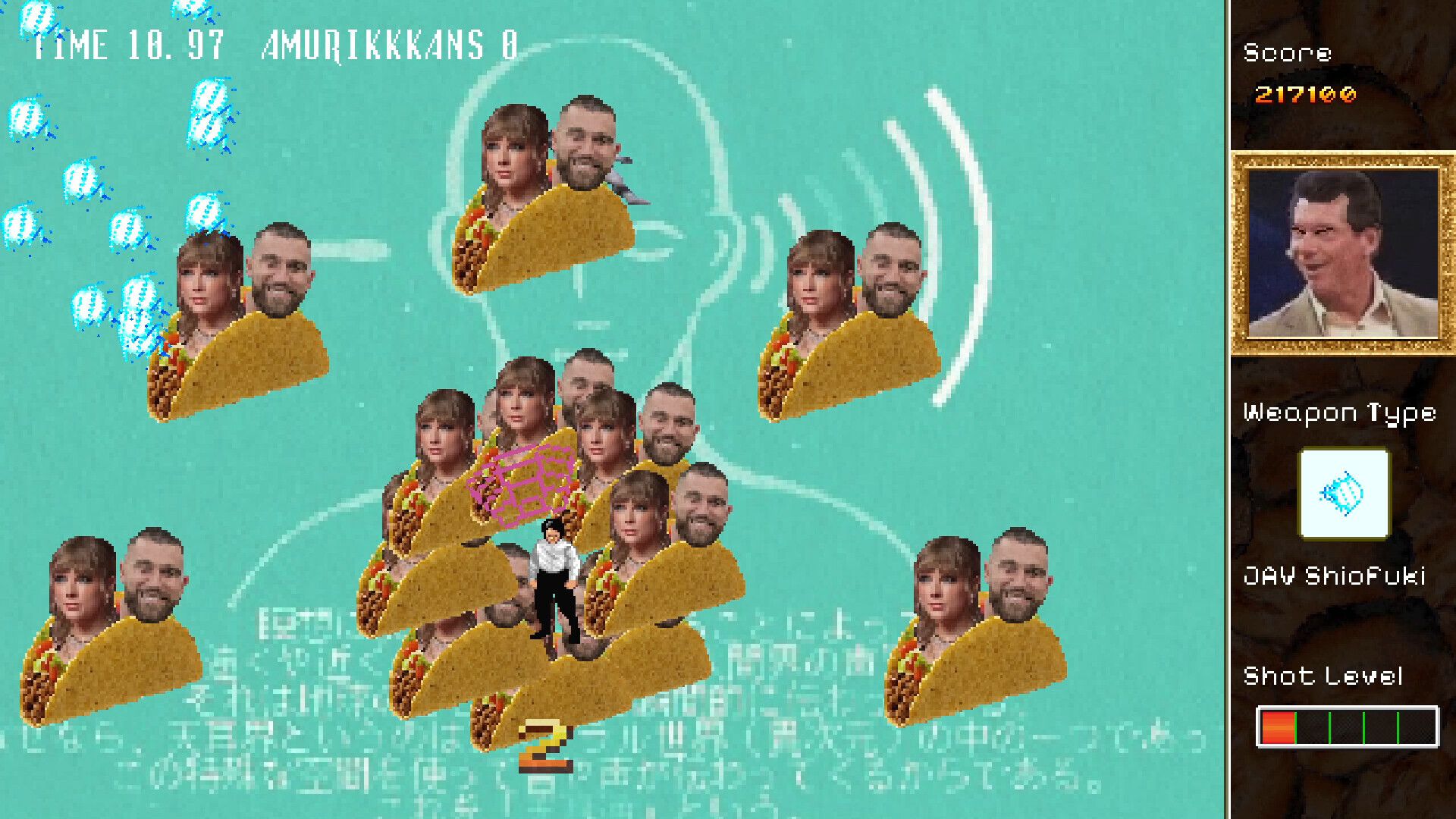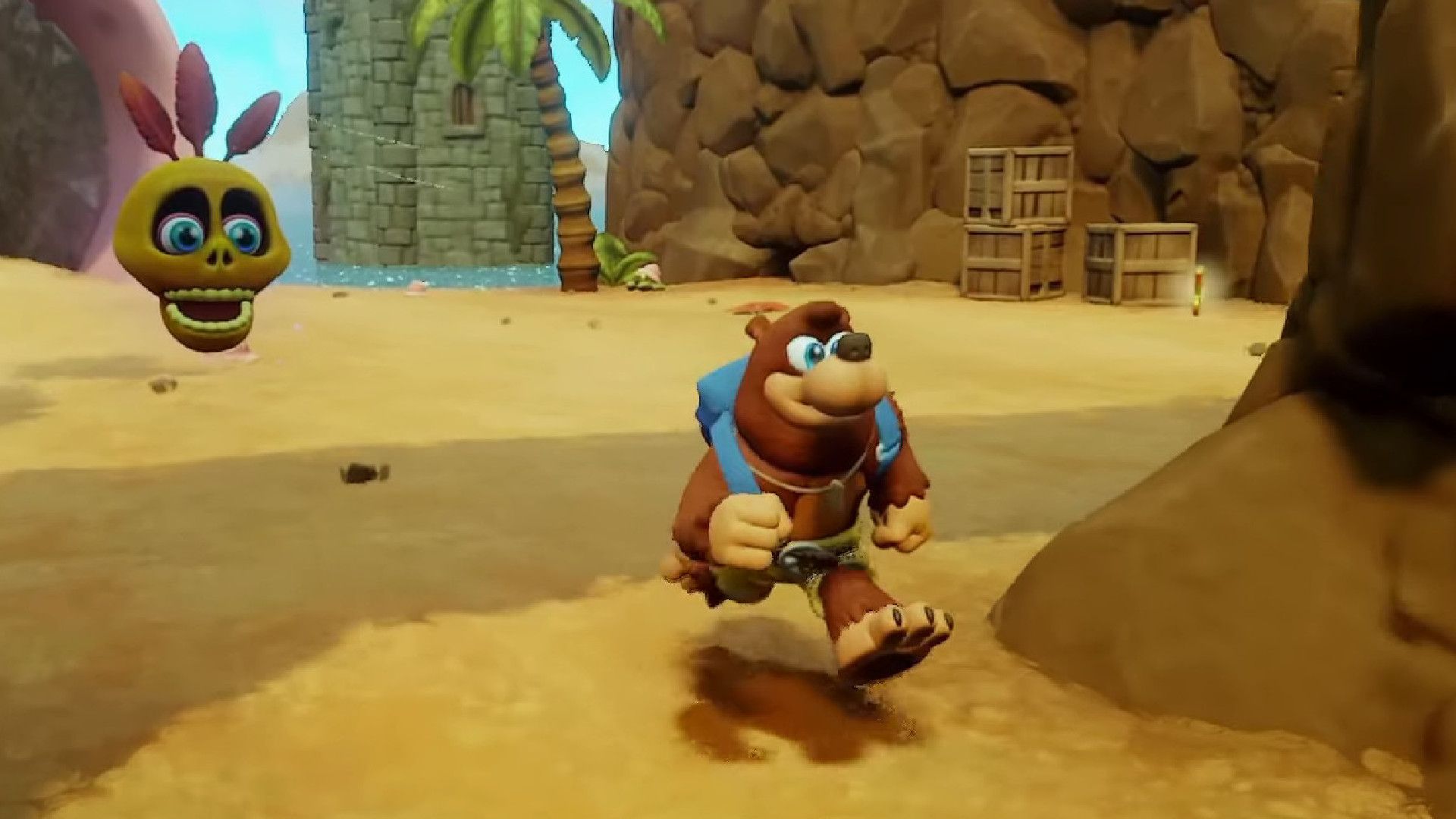In most turn-based games you see the consequence of your decisions pretty quickly. You give the order to attack; bullets fly. Frozen Synapse delays that gratification, asking you to wait until you’ve given orders to each of your squad of vat-grown sci-fi soldiers before showing the results, because those results play out simultaneously with your opponent’s—a machinegunner rounds a corner and is surprised by a shotgun blast while a grenadier ducks behind cover before a sniper can line up his shot, and a rocket harmlessly demolishes a wall several seconds after everyone behind it has buggered off.
What prevents all that action from being confusing is that it all plays out in abstract neon shapes. Everything in Frozen Synapse is seen through “the shape”, a digital overlay that clings to the future city of Markov Geist like a pair of yoga pants, making it readable at a glance.
Frozen Synapse was released by Mode 7 in 2011, and its success surprised creators Ian Hardingham and Paul Kilduff-Taylor. While many multiplayer-focused indie games languish, unable to attract or maintain the critical mass of players needed to make finding a match hassle-free, Frozen Synapse’s design makes it easy to have multiple games going at once, taking turns and then being alerted when one of your opponents had done the same. Plus, lag isn’t an issue. You can still find a game today.
Five years later, Hardingham and Kilduff-Taylor think it’s time for a sequel. They’ve been working on it since June of last year,
recently announcing it with a screenshot and the words “Open World Tactics” and “Coming 2016”.

The City & The City
“Open World” is an ambitious thing to say about an indie game, and a label rarely applied to anything that isn’t an action game or an RPG. What does it mean for a squad-level tactics game made by a small team to be “Open World”? Each singleplayer Frozen Synapse 2 campaign will generate its own map of Markov Geist to form a strategic top-level, and conflicts on the tactical layer can take part in any of its buildings. “We think this is the first procedurally generated city in a game where you can do that,” says Kilduff-Taylor. “The entire city is comprised of living, functional buildings and your squads can go anywhere at any time on missions that you define yourself.”
“It’s not like I can only have a mission in building X either,” says Hardingham. “I can set a mission in building X and the road to the right of it and maybe the weird pawn shop behind it.”
One of the original game’s best features was that its small levels made for quick turns, and Mode 7 aren’t eager to throw that away completely. “Obviously we—well, hopefully—understand what makes Frozen Synapse tick and that’s one of the things,” says Hardingham. “You don’t want a gigantic level every time you’re playing Frozen Synapse, that’s not necessarily what Frozen Synapse is about.” What this new openness will add is more options about how you approach those missions. “Do you want to set up a fair distance away and move forward through the roads? Are you moving through some other building that you’ve managed to get access to?”
“You have to think very carefully about how you’re going to get from A to B, so it’s not about taking over territory.”
It may sound like a game of territorial conquest, a sci-fi Jagged Alliance, but they’re hoping to create something more. “I actually have a bit of an issue when I’m playing one of these great games like Alpha Centauri where it’s all about painting the territory your color,” says Hardingham. “What happens after you get really powerful, you get into the midgame, is that often the map’s a bit less interesting to interact with. You control so much of it, it’s really morphed into a radically different game. I think one of the really exciting things about controlling a covert ops team within a city is that whenever you’re moving in the city you’ve got to pay attention to what you’re doing. You could be coming across an enemy at any time. You have to think very carefully about how you’re going to get from A to B, so it’s not about taking over territory.”
And while you’re doing that computer-controlled factions are doing the same. “We actually feel like they’re a bit more like Alpha Centauri sides more than factions in GTA or something. These guys look after their own interests, they actually go and take over places, get in battles that can change things. They can lose, they can die.”

Towers of commerce and faith
So why are these factions fighting? There’s a mysterious external force making incursions into Markov Geist to uncover valuable long-lost artifacts, and the city’s cults and gangs are competing for them as well. An alert on the city screen will warn you of each incursion and it’s up to you how to respond.
While Mode 7 says that knowing the story of the first game isn’t necessary, Frozen Synapse 2 is set after it, with its citizens attempting to rebuild and forge new alliances. “Because you have these generated cities each time it’s gonna be a different version, a different hypothetical city,” says Kilduff-Taylor. “This is about the idea of the city as a very complex compromise between different ideologies. Each faction will have its own ideology, they will relate to the incursion force in a different way. Some of them might want to enslave it and use it for their own goal, some of them might want to research it, some of them might want to ally with it and have it take over the city.”
He cites Darran Anderson’s book
Imaginary Cities as an inspiration, “He talks a lot about cities as being reflective of ideologies and I though that was a really interesting idea, this idea of towers of commerce and faith, that buildings represent different points of an ideology and they’re all trying to reach towards competing goals. It was an idea that I wanted in Frozen Synapse 1 but we had to convey that with linear missions, whereas here we can have a real living city with these real personalities all competing,”
Beyond the complicated warring belief systems, there are elements you might associate with a more typical open world game. Hardingham gives an example: “You can go and piss off faction A, you can take the weird church and go attack one of their temples and see what happens. They’re probably gonna attack you, they’re gonna ask their friends to attack you. All that stuff you’re completely free to do at any time.”
As Kilduff-Taylor puts it, you can either choose which factions to side with to push for a specific endgame, or “you can also decide to be nonsense and to prat around as well. It’s important to me that we manage to find a way of having a really strong story without railroading how the player feels they should play at all.”
As for the player, they’ll be in charge of a small group who have been sent into the city to deal with the situation however they prefer. “We want you to have an open remit,” Hardingham says. “You’re there to find out what’s going on with this incursion force and why it’s coming in and attacking the city, and to manage everything to create some kind of power balance or establish some kind of order. It’s up to you to define what order that is.”

On multiplayer and sneakiness
The first screenshot of Frozen Synapse 2 revealed details that weren’t present in the original game. There’s more variety to the objects that can be used as cover, including a car and trees outside the building, and what looks like a toilet inside it. (Obviously video game toilets are Very Important.) Separating the inside and outside is a wall with a curved section, something else the first Frozen Synapse did without. It may seem a slight change, but it’s an illuminating one.
But as nice as the campaign’s procedurally generated city sounds, it won’t be a feature of the multiplayer mode. “It’s just too big a challenge to do at this stage,” explains Hardingham. “I think the primary thing for multiplayer above all else is probably the new units. In singleplayer we have all these new units and we also have stats, basically it’s based around signing mercenaries that are a kind of FS archetype but will have different stats and different perks. In multiplayer we expand on the original roster of six different kinds of units with another seven or eight units that we spent a lot of time designing.”
Those units aren’t just new varieties of gun. They’re designed to interact with another new feature: stealth. Both singleplayer and multiplayer will allow units to sneak into position before everything kicks off. “Being unseen and sneaking around is a huge part of it,” Kilduff-Taylor says, “and if the AI spots you then units will go to defensive positions and others will come round and attack you and try and flush you out. We’ve got some new units that are relevant to that kind of gameplay.”
They’re tight-lipped about most of those new units, but Hardingham mentions one favorite, “a smoke grenade launcher, which is really nice because it allows you to create a dynamic bit of terrain, in some ways a short-term bit of terrain, so I hope that gives the idea of the kind of thing that we’re talking about. Any new unit has to fit in perfectly with the really hardcore mechanics of FS, and what’s FS all about? It’s about sight and prediction and preparedness and being able to plan really cool, complicated stuff.”
Another new feature that will particularly change the multiplayer is what they’re calling “advanced tactics”, a new set of orders that can be programmed into troops to tell them how to react to changing events as they occur: “if X happens, switch to plan Y.” That’s a big change, but smaller ones are in the works as well. “We’re just trying to deal with a few of the problems people have with the first game,” says Hardingham. “We had a problem with people abandoning games, we’re gonna be working really hard to fix that. There was a specific ploy in multiplayer called the distraction ploy¹ that I’m not a particular fan of, we’re getting rid of that.”


